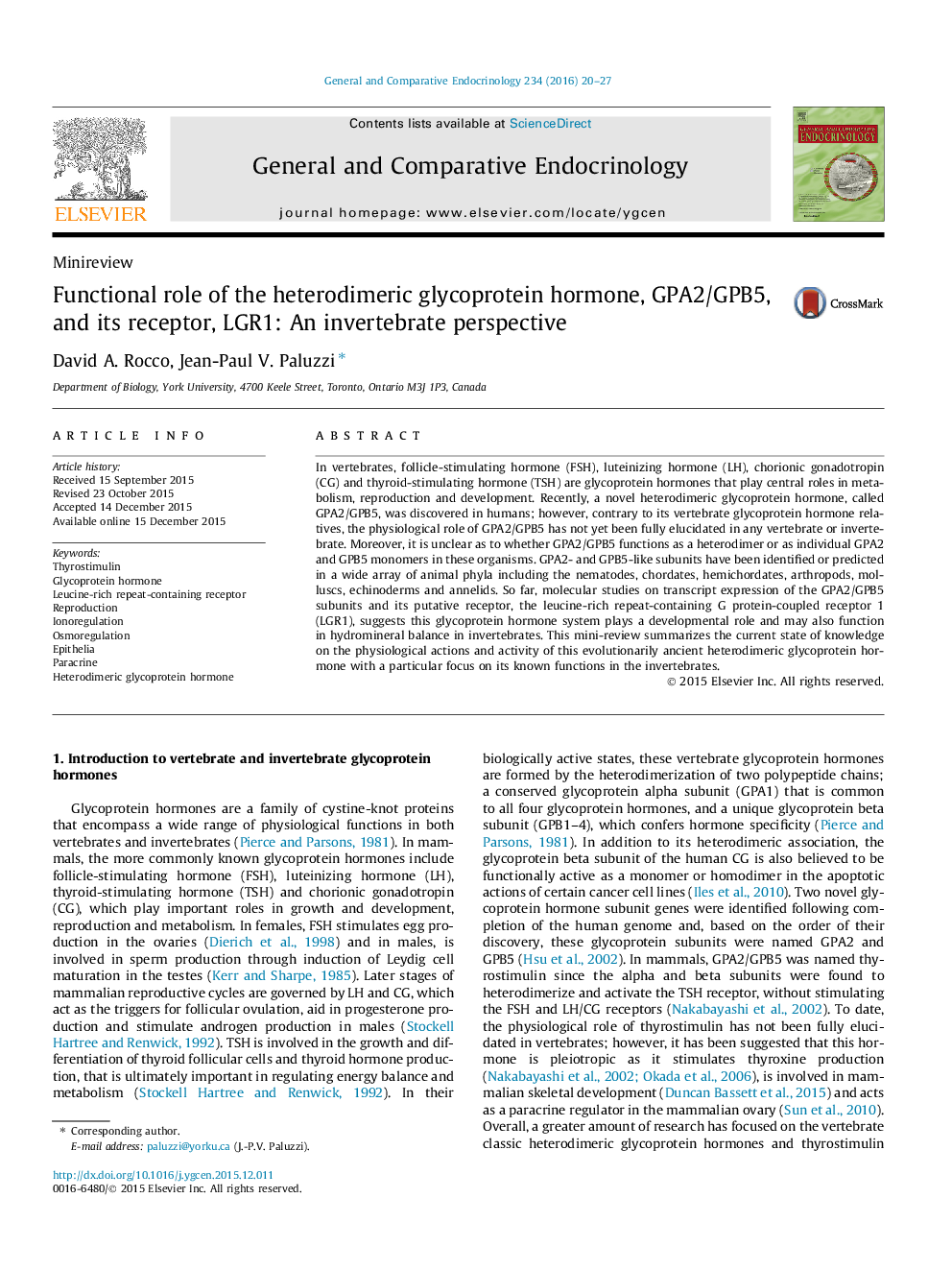| Article ID | Journal | Published Year | Pages | File Type |
|---|---|---|---|---|
| 2799783 | General and Comparative Endocrinology | 2016 | 8 Pages |
•GPA2/GPB5 is a relatively novel discovered hormone with limited known functions.•We summarize recent progress on deduced physiological roles of GPA2/GPB5.•The GPA2/GPB5 hormone system is widespread amongst bilaterians.
In vertebrates, follicle-stimulating hormone (FSH), luteinizing hormone (LH), chorionic gonadotropin (CG) and thyroid-stimulating hormone (TSH) are glycoprotein hormones that play central roles in metabolism, reproduction and development. Recently, a novel heterodimeric glycoprotein hormone, called GPA2/GPB5, was discovered in humans; however, contrary to its vertebrate glycoprotein hormone relatives, the physiological role of GPA2/GPB5 has not yet been fully elucidated in any vertebrate or invertebrate. Moreover, it is unclear as to whether GPA2/GPB5 functions as a heterodimer or as individual GPA2 and GPB5 monomers in these organisms. GPA2- and GPB5-like subunits have been identified or predicted in a wide array of animal phyla including the nematodes, chordates, hemichordates, arthropods, molluscs, echinoderms and annelids. So far, molecular studies on transcript expression of the GPA2/GPB5 subunits and its putative receptor, the leucine-rich repeat-containing G protein-coupled receptor 1 (LGR1), suggests this glycoprotein hormone system plays a developmental role and may also function in hydromineral balance in invertebrates. This mini-review summarizes the current state of knowledge on the physiological actions and activity of this evolutionarily ancient heterodimeric glycoprotein hormone with a particular focus on its known functions in the invertebrates.
Graphical abstractFigure optionsDownload full-size imageDownload as PowerPoint slide
